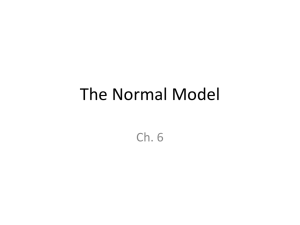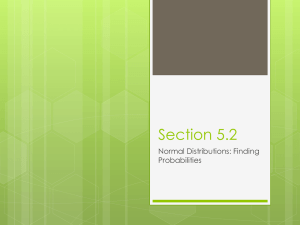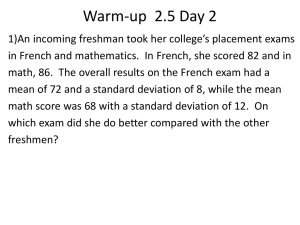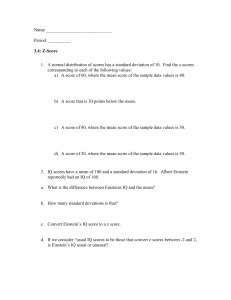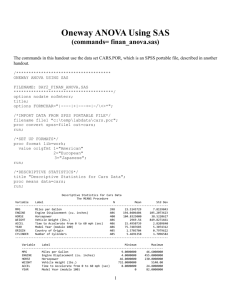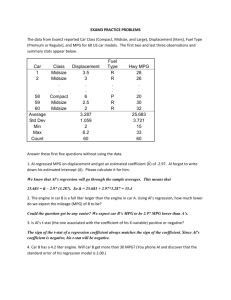Notes 4.4 - Granite Bay High School / Granite Bay High School
advertisement
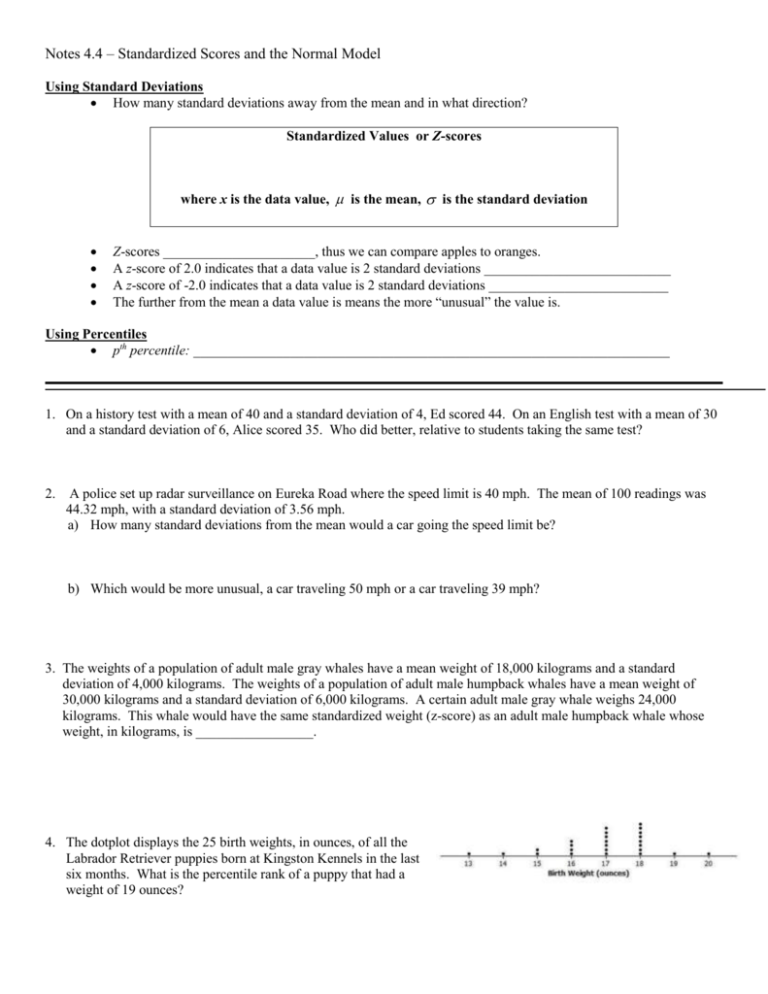
Notes 4.4 – Standardized Scores and the Normal Model Using Standard Deviations How many standard deviations away from the mean and in what direction? Standardized Values or Z-scores where x is the data value, is the mean, is the standard deviation Z-scores ______________________, thus we can compare apples to oranges. A z-score of 2.0 indicates that a data value is 2 standard deviations ___________________________ A z-score of -2.0 indicates that a data value is 2 standard deviations __________________________ The further from the mean a data value is means the more “unusual” the value is. Using Percentiles pth percentile: _____________________________________________________________________ 1. On a history test with a mean of 40 and a standard deviation of 4, Ed scored 44. On an English test with a mean of 30 and a standard deviation of 6, Alice scored 35. Who did better, relative to students taking the same test? 2. A police set up radar surveillance on Eureka Road where the speed limit is 40 mph. The mean of 100 readings was 44.32 mph, with a standard deviation of 3.56 mph. a) How many standard deviations from the mean would a car going the speed limit be? b) Which would be more unusual, a car traveling 50 mph or a car traveling 39 mph? 3. The weights of a population of adult male gray whales have a mean weight of 18,000 kilograms and a standard deviation of 4,000 kilograms. The weights of a population of adult male humpback whales have a mean weight of 30,000 kilograms and a standard deviation of 6,000 kilograms. A certain adult male gray whale weighs 24,000 kilograms. This whale would have the same standardized weight (z-score) as an adult male humpback whale whose weight, in kilograms, is _________________. 4. The dotplot displays the 25 birth weights, in ounces, of all the Labrador Retriever puppies born at Kingston Kennels in the last six months. What is the percentile rank of a puppy that had a weight of 19 ounces? Normal Models: “Normal” does not refer to “usual”….instead it refers to _____________________________ Normal models are ONLY appropriate for symmetric-unimodal distributions. Always confirm this before using the model. Know the difference between Statistics and Parameters Statistic Parameter Mean Standard Deviation To represent a Normal model we use: N , The 68 - 95 - 99.7 Rule 68% of the values fall within 1 standard deviation of the mean. 95% of the values fall within 2 standard deviation of the mean. 99.7% of the values fall within 3 standard deviation of the mean. 5. Suppose a Normal model describes the fuel efficiency (mpg) of cars currently registered in California where N 24,6 . a) Sketch the Normal Model and clearly label the 68-95-99.7 Rule b) Between what mpg would you expect the central 95% of the cars to be found? c) What percent of all cars get less than 18 mpg? d) About what percent of cars should have fuel efficiency above 36 mpg? e) About what percent of cars should have fuel efficiency between 12 mpg and 18 mpg? f) A fuel efficiency of 30 mpg corresponds to what percentile of currently registered cars in California? 6. The distribution of the heights of students in a large class is roughly Normal. Moreover, the average height is 65 inches, and approximately 95% of the heights are between 59 and 71 inches. Find the standard deviation of the distribution of heights.
